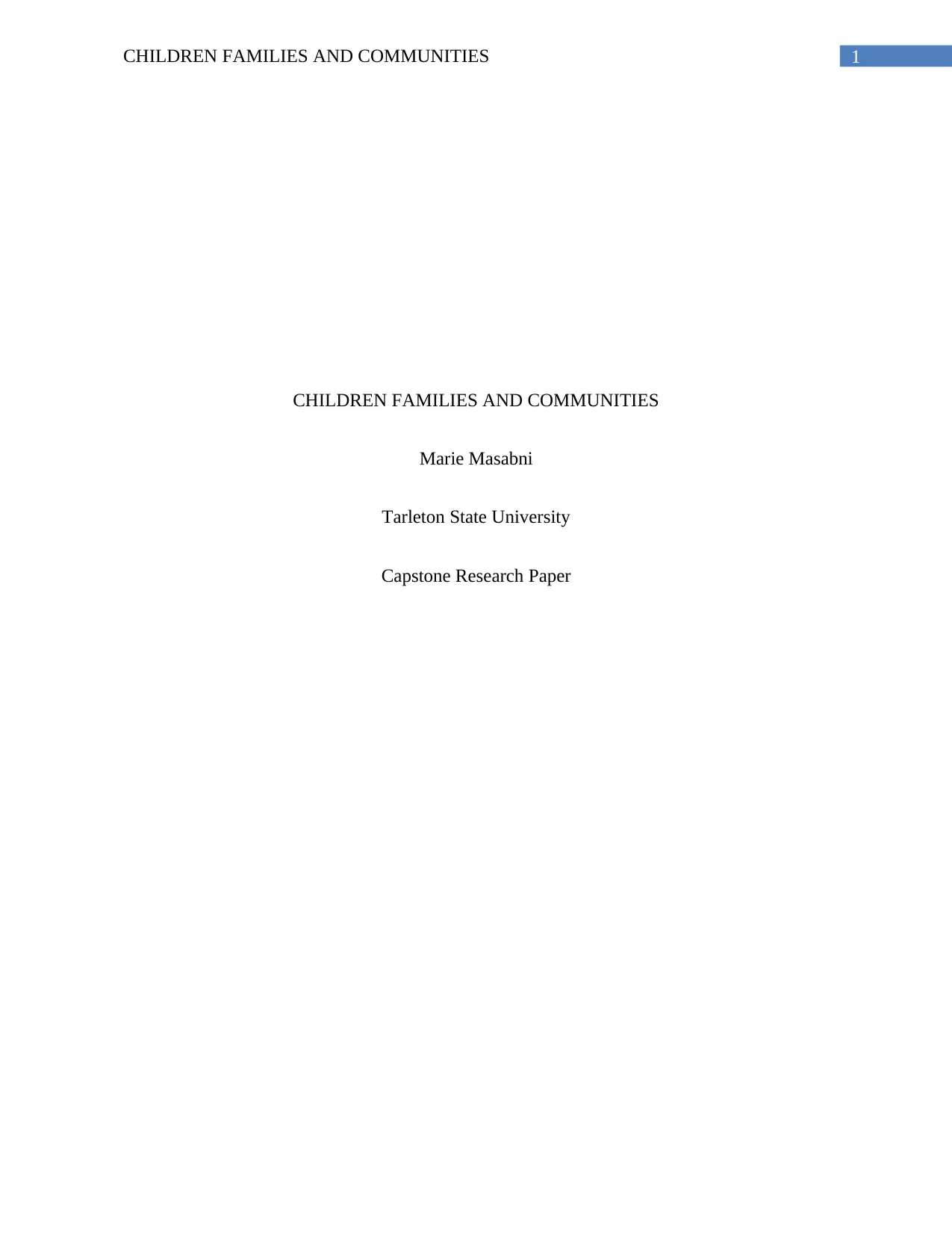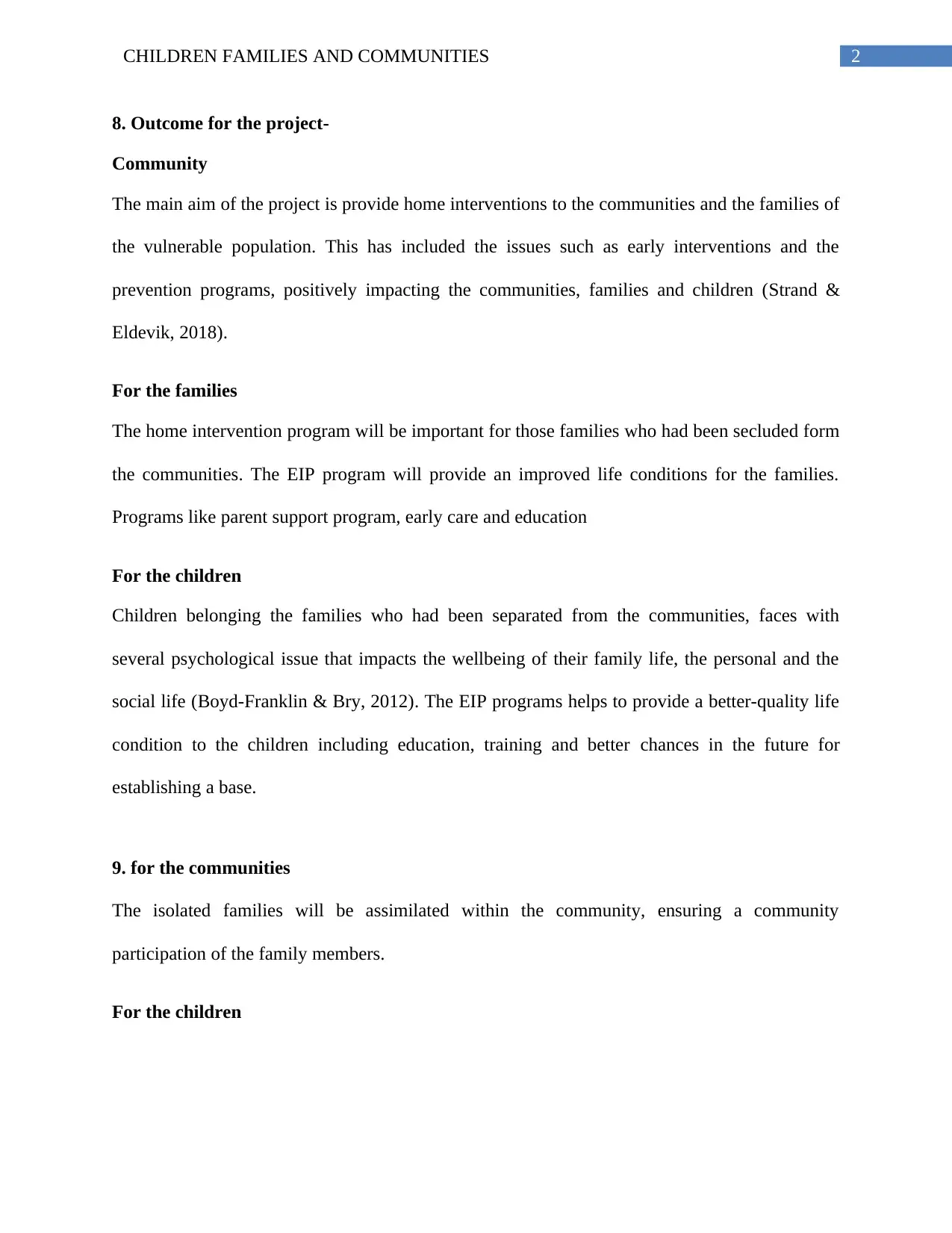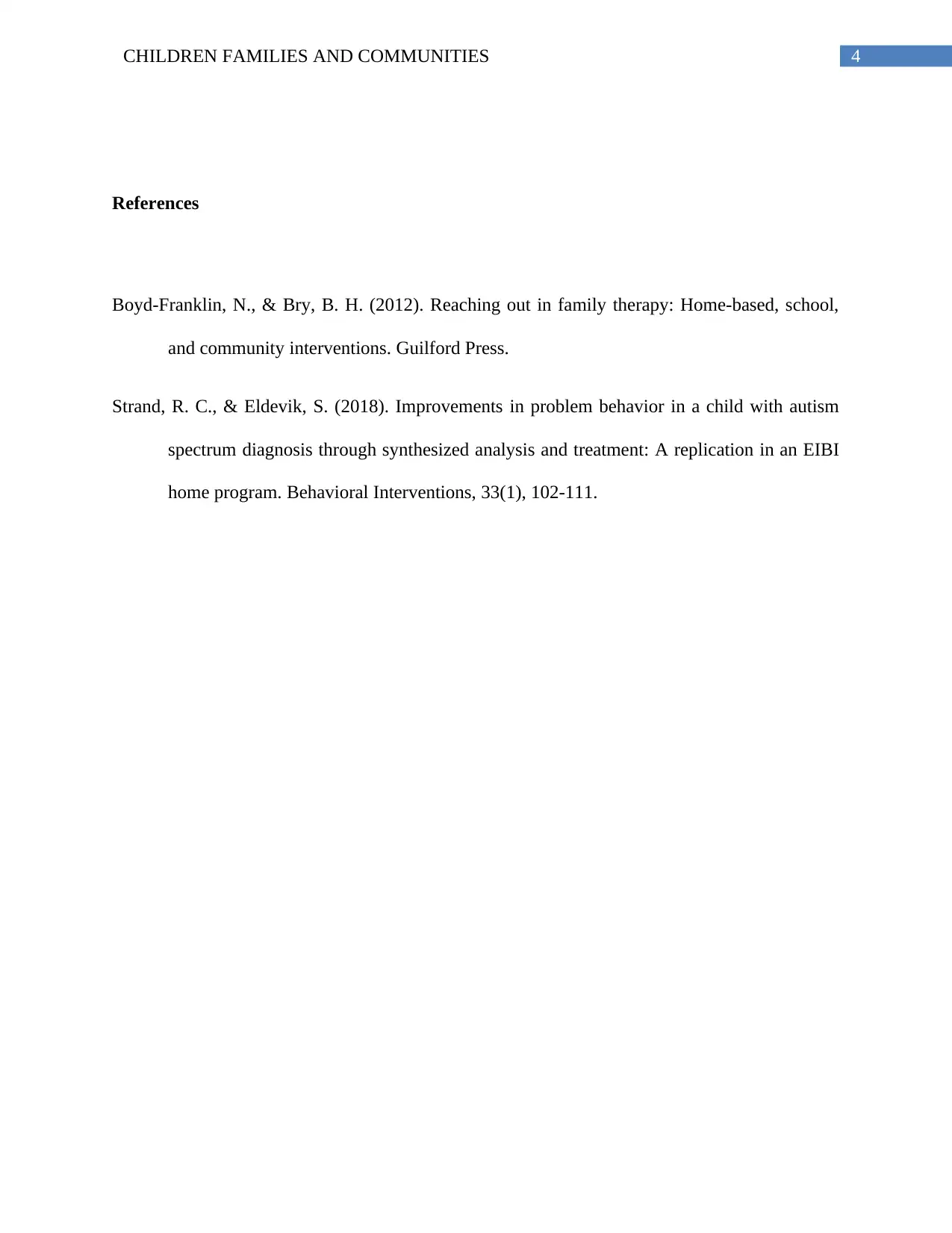Tarleton State University: Home Intervention Project Analysis
VerifiedAdded on 2023/01/23
|4
|476
|67
Project
AI Summary
This capstone research paper, titled "Home Intervention Program," examines the impact of social isolation on families and children within a community context. The project focuses on providing home interventions to vulnerable populations, addressing issues such as early intervention and prevention programs. The intervention aims to reintegrate isolated families into their communities, improving their living conditions, health, and employment opportunities. Strategies include developing smoke-free environments, lead-free housing, and family care programs. The project's outcomes include improved literacy skills and reduced psychological illnesses in children, alongside improved wellbeing for families. The paper references relevant literature, including works by Boyd-Franklin & Bry (2012) and Strand & Eldevik (2018), highlighting the importance of community participation and the integration of stakeholders such as community members, social workers, teachers, and parents to meet the needs of the target population. The paper also addresses the development of EIP services for children to provide them with equal opportunities. The overall goal is to promote social inclusion and meet the diverse needs of the community.
1 out of 4











![[object Object]](/_next/static/media/star-bottom.7253800d.svg)